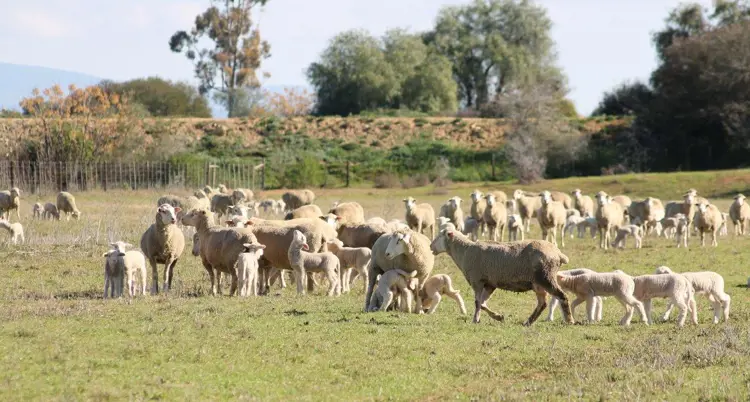Sources of energy and their uses
As published in Stockfarm – August 2016 However, the question is whether it is presently still the best route to follow and to what extent the use of grain is safe and how cost-effective it is nowadays. The same questions are asked regarding molasses. Both these sources of energy are significantly more expensive than a few years ago. Presently molasses is not the same as the molasses of a few years ago, because it is used to produce ethanol. Most of the sources of molasses supply a mixture of molasses and CMS in which many of the sugars were lost during the fermentation process of ethanol production.

There is increasing proof that the sustained use of high grain levels (starch) in feed have a number of negative consequences for ruminants such as:
- Acidosis which is known to all of us and which leads to permanent damage to the rumen wall, impaired performance and even to mortalities
- Laminitis is one of the consequences of the continuous use of feed with high starch levels and acidosis; which leads to hoof problems (Cook 2004). This condition is characterised by malformed hooves, overgrown hooves, etc. (Blowey 1993). I sometimes wonder how much of the condition we know as foot rot (“vrotpootjie”) is actually more often a case of laminitis as a result of the overuse of grain as a food source
- Histamine: Garner et.al (2002) have also proved that the continuous use of high grain levels in rations increases the secretion of histamine. Histamine is an inflammatory agent that causes inflammation and bleeding
- Reduced fertility: Research done in Canada also found that the continuous use of high starch resources by the inclusion of grain can decrease the fertility of reproductive animals by as much as 50%. This is caused by the deposition of fat in the testis of bulls, which interferes with the heat regulation process, and the ovaries of heifers. When these animals are placed on a starvation diet, this type of fat is the last to disappear. Do we still grow our replacement animals on grain rations?
What then, is the answer? Is the use of grain not allowed? Not at all; but the judicious use of grain should be strongly considered. Grain is a source of rapidly digestible starch, which if fed in excess, can be detrimental. This feed source should rather be combined with other sources of energy such as bran, oilcakes, fats, sugars and energy rich fibres that are digested slowly and ensure a gradual release of energy in the rumen.
SFos
De Heus formulates in this way by using the SFOS system and as a result they use up to a quarter of the grain that is traditionally used in complete feeds. This sometimes means that the cost of the total ration is higher per ton, but the increase in the efficiency of the ration in the rumen gives a better feed conversion ratio (kg of feed used to add a kg to the carcass) so that profit margins are positively influenced. This means that a final ration can consist of 13 to 15 different resources instead of the 5 to 6 (of which grain is the majority) in order to obtain the perfect energy profile.
This increased efficiency often means that it is better to sell one’s grain and to purchase a balanced complete feed rather than to try to mix one’s own feed mixture with high grain levels. This also relieves the pressure on labour, the cost of mixing, wear and tear and responsibility.
De Heus has done many case studies where home mixed high grain rations are compared to complete feed (in sheep feedlots and cattle feedlots, during growth tests) and the results that support full feeds are the majority. Our stud breeders has also seen a major increase in stud bulls passing their fertility tests after a feeding periods.
